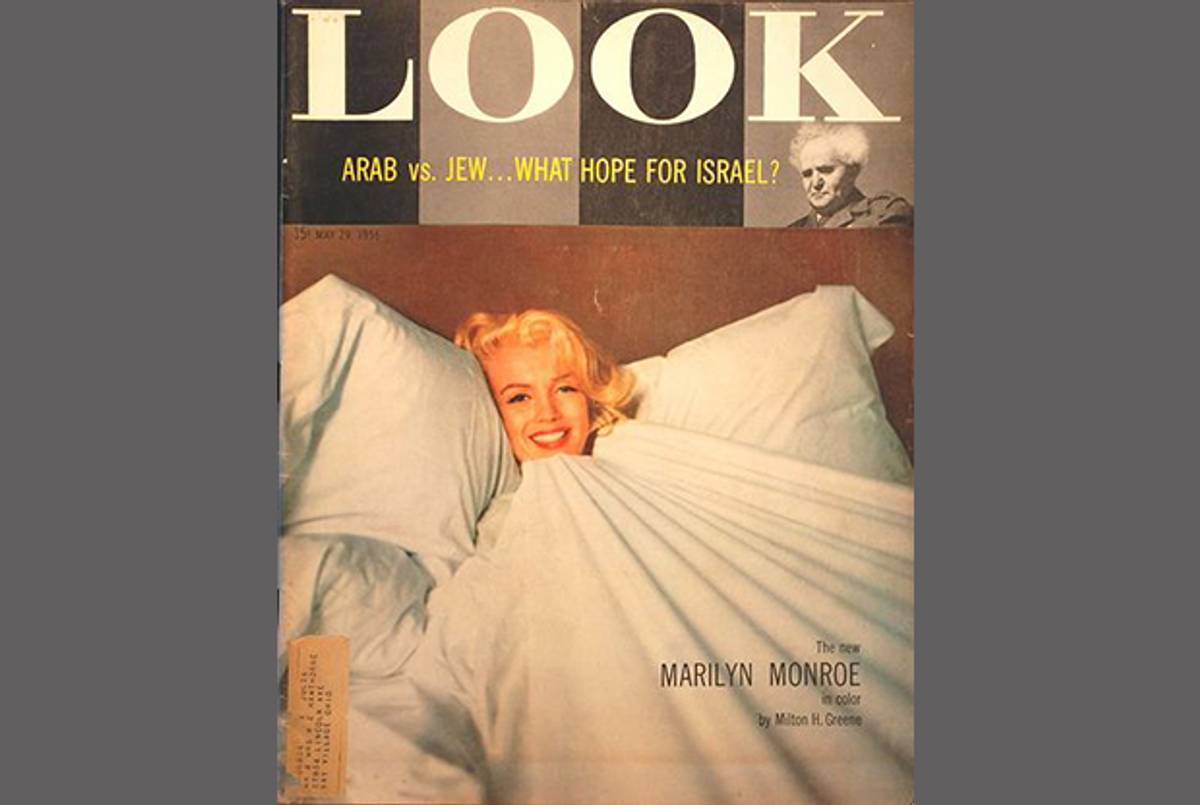
Thomas R. Shepard, the last publisher of Look magazine, which helped to launch the photography career of Stanley Kubrick, and published illustrations by Norman Rockwell, died of pneumonia on Monday in Florida. Shepard, who was born in Manhattan and served in the U.S. Navy during World War II, was 96 years old.
A general-interest magazine, Look was first published in 1937 by Cowles Communications. Look‘s main competitor was Life, which was published by Henry Luce beginning in 1936. Look, however, “was typically considered an also-ran to Life,” according to the New York Times:
Look passed The [Saturday Evening] Post in 1961 and briefly edged into first place ahead of Life a few years later, with a circulation of 8.5 million copies.
Look magazine ceased its run in 1971, felled in part by the growing marketshare of television advertising; the periodical was briefly resuscitated in 1979 but lasted only a year. Life went down a year later, at the end of 1972.
But in 1965, six years before Look‘s eventual demise, Shepard took over as publisher. And Shepard, who who grew up in East Orange, NJ, and later lived in Greenwich, CT for 67 years, would “boas[t] to advertisers that average readership hit 53 million,” the Times reports:
Mr. Shepard [was] a salesman with missionary zeal…during the heyday of mass general-circulation magazines driven by newsstand sales, lavish photographic spreads and alluring articles. That was before television began vying for advertising revenue and eyeballs, and crippling postal rate increases obliterated profit margins.
In 1964, one year before Shepard took over as publisher, Look ran a cover story written by Thomas B. Morgan, a senior editor at the magazine (Morgan died last June), called “The Vanishing American Jew: Leaders fear threat to Jewish survival in today’s ‘crisis of freedom.’” (In 1998, Alan Dershowitz also wrote a book called “The Vanishing Jew.”)
The article’s main image shows what appears to be a young man reading the Torah with a yad. The caption reads: “While more Jews are than ever are participating in religious affairs, marriages outside the faith are increasing at an “alarming” rate.”
The article presents four main bullet points, or reasons for concern:
— New studies reveal loss of Jewish identity, soaring rate of intermarriage.
— Judaism may be losing 70 percent of children born to mixed couples.
— Because of low birthrate, Jews are “scarcely reproducing themselves.
— Jews may fade from 2.9 to 1.6 of the U.S. population by the year 2000.
Last year, Tablet contributor Leonard Saxe, a professor of Jewish Community Research and Social Policy at Brandeis University, wrote about Look‘s now-“iconic” article:
…buried in the story was that membership in Jewish congregations and enrollment in Jewish religious schools had reached record levels. But the narrative was unequivocally bleak. A half century later, dire forecasts are again front and center.
For context, Saxe analyzed a 2013 Pew report called, “A Portrait of Jewish Americans,” which Aish.com writer Rabbi Benjamin Blech, deemed a “wake up call for all of us” and a “grave concern.”
“Shrill warnings about the dangers of intermarriage and the decline of non-Orthodox forms of Judaism have given rise to a refreshed narrative of a dismal Jewish future,” Saxe wrote about the 2013 Pew study, which had “unleashed a tsunami of doom and gloom punditry” similar to the “bleak” Look article.
“But it is a distorted story,” Saxe wrote.
Using the four main bullets from 1964’s “The Vanishing Jew” from Look as a guide, here’s the crib sheet of Saxe’s analysis (indented below), which is well worth a re-read as a whole:
— New studies reveal loss of Jewish identity, soaring rate of intermarriage.
…we may be at a moment in time when intermarriage, while a challenge, is actually promoting the expansion and renewal of American Jewry. How this will evolve is not primarily a function of demography, but of the community’s response.
intermarriage rate does not directly affect the future shape of the Jewish population; rather, the key determinant is whether children raised in those households will be Jewish.
(Furthermore, at the end of the Look article from 1964, Morgan writes, “It is utterly premature to morbid about intermarriage.”)
— Judaism may be losing 70 percent of children born to mixed couples.
See here.
— Because of low birthrate, Jews are “scarcely reproducing themselves”
Our most recent data indicate that the U.S. Jewish population continues to grow and is now more than 7 million individuals. That compares to 5.5 million Jews estimated by the 1990 National Jewish Population Survey (NJPS), the most comparable data from a prior study. In less than 25 years the Jewish population has increased by nearly 30 percent.
— Jews may fade from 2.9 to 1.6 of the U.S. population by the year 2000.
The current state of American Jewry is neither as dire as some suggest, nor is it unequivocally positive. On the one hand, the anticipated demise of non-Orthodox American Judaism has not occurred, and there are many positive developments regarding Jewish attitudes and behaviors among the large majority of Jews who describe themselves as non-Orthodox. On the other hand, as predicted, Jews are a smaller proportion of the American population and there are growing numbers of non-Jewish individuals of Jewish background. These trends, both positive and negative, can be ignored only with peril.
…a vibrant future is not guaranteed. New knowledge will need to be created, along with the political and social will to employ this knowledge to ensure a Jewish future.
As Blech puts it: “Jews survived, but Look magazine disappeared.”
Related: Intermarried Couples Can Still Build Jewishly Engaged Families
The Sky Is Falling! The Sky Is Falling!
Intermarriage, I Do!
Jonathan Zalman is a writer and teacher based in Brooklyn.